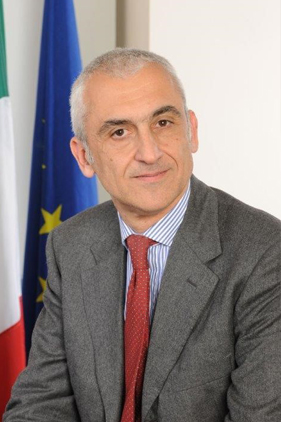January 2016, Year VIII, no. 1
Alberto Biancardi
Water, electricity, gas and perhaps waste management. So many headhaches!
“What I can say, based on the experience the AEEGSI has accrued in the last few years, is that a centralised independent regulator can help to ensure accessibility, fruition and homogeneous distribution of a service throughout the country as well as establish good quality levels coupled with efficient, cost-performance management.”
Telos: Gas and electricity bills are a source of great concern for the Italians. Can you briefly explain how tariffs are set by the Regulatory Authority for Electricity, Gas and Water (AEEGSI)?
Alberto Biancardi: The Authority establishes the tariffs based on operators’ costs; its role is to induce the latter – through several regulatory incentives – to be as efficient as possible and thereby minimise their costs.
Since the AEEGSI is an independent administrative body its decisions are directly applicable and do not have to be approved by Government or Parliament.
In particular, pursuant to its founding law, establishing the Authority sets the tariffs for the use of the networks, in other words the transmission, distribution and metering of electricity and gas. It also guarantees all operators equal access to these networks.
However, the tariff for transportation and meter management is only one item of the customer’s bill (these tariffs now constitute approximately 18% of the total bill of the average customer). Actually, over 40% of the total refers to electricity/gas, i.e., to the activities performed by the supplier to provide electricity/ gas to the final customer. These services have been completely liberalised. In fact, the price of those items for standard-offer customers (i.e., who still do not buy their electricity/gas on the free market) is established by the Authority based on market conditions, i.e., on the price of supply set by the wholesale market.
Having said this, I should point out that a rather big slice of the costs in the bill are charges, taxes and excise duties established by law and applied by the Authority.
For example, the so-called system charges in the electricity bill now account for over 24% of the total; most charges are used to finance the incentives for renewable sources (over 85%). Taxes make up a further 13%.
Instead in the gas sector taxes account for a rather substantial percentage of the total (38%) while charges are almost negligible (roughly 2%).
Every three months the Authority revises the amount owed for the charges and electricity/gas while expenses for transportation and meter management are revised annually. Although the amount owed for the charges and infrastructures is identical for customers who enjoy a standard-offer regime and those who buy on the free market, the amount owed for electricity/gas can vary.
To try to simplify the bill and make it easier to understand the Authority decided to implement the new Bill 2.0 from January 2016: a simple, streamlined format on one sheet of paper showing all the main tariffs and supply expenses.
We increasingly hear about the capacity market as well as the energy market in the electricity sector. What is a capacity market? And what is the Authority’s position?
New electricity-generating technologies have radically changed the electricity sector and the way it is managed. Since this is an ongoing trend we believe it is increasingly crucial to shift, as we techies say, from an energy market to a capacity market.
In short, the traditional market set-up – essentially based on the purchase and sale of energy produced and consumed – is increasingly less suited as the number of renewable sources grows.
Unlike power plants that use traditional sources – usually gas or coal – these plants depend on wind and sun to produce energy. This forces network operators to purchase generating capacity from more and more plants to offset the effects of unexpected changes in the weather (more or less production of electric energy depending, for example, on whether the wind is stronger or weaker than expected). This is necessary to ensure network balance and guarantee energy to users. This results in capacity contracts - often lasting several years - which had less of an impact on the overall market set-up in the former traditional approach.
Having taken stock of this situation the Authority for Electricity decided in favour of the capacity market. It is working with government to speed up the changes that need to be made to relevant parts of current Italian legislation, after clearance from community authorities.
When we think of the AEEGSI we often forget the crucial role it plays in establishing the tariffs for water services. Please tell us about the important package of measures adopted in late December 2015 establishing the new Water Services Regulation.
It’s true; the decisions taken in December are an important step forward towards a comprehensive, stable and transparent regulation, something the water supply system urgently needs. We established the criteria to determine the tariffs for the second regulatory period: a four-year period starting on the first of January 2016. We built on our experience and the results of the previous four-year period, in other words from the moment the Authority was assigned this new task. We confirmed most of the existing regulations in order to stabilise the system and show investors that this complex sector in general is now extremely reliable.
However, bear in mind that in the next few decades we have to invest 65 billion euro in new infrastructures, most of which will be spent in the next few years. Our ability to make these investments will prove whether or not our system is a good system. In the past four years investments in water infrastructures affecting roughly two-thirds of the population has shot up from 961 million euro in 2012 to 1.49 billion euro in 2015 (an overall increase of 55%); for 83% of the population there has been an average tariff increase compared to the previous year of 4.04% in 2014 and 4.46% in 2015.
To complete the regulatory system we adopted not only a commercial quality system, but also the so-called standard agreement, in other words a contract establishing the relationship between the granting public authority and the water supply company.
The Authority has identified several indicators to ensure that all consumers throughout the country enjoy the same maximum and minimum quality standards; it has also established the method required to record, communicate and verify the performance data provided by service providers at the request of users.
We will continue to work on quality in the upcoming months because it’s important to improve the service provided to all consumers; this includes not only water quality but, more in general, services such as invoicing, the accurate recording of water consumption, continuity of service, etc.
There’s been talk of possibly shifting the responsibility for the regulation and control of the waste cycle to the AEESGI. What’s your opinion? What advantages could it bring?
It’s a political decision that the legislator has to take, so it’s not for me to express an opinion.
What I can say, based on the experience the AEEGSI has accrued in the water sector in the last few years, is that a centralised independent regulator can help to ensure accessibility, fruition and homogeneous distribution of a service throughout the country as well as establish good quality levels coupled with efficient, cost-performance management.
This would be an important challenge for us; if we are asked to work on this issue we will do so with the utmost care and commitment.
Editorial
7 November 2015: in conjunction with the hearings on the Budget Law the Italian National Institute of Statistics (Istat) submitted to Parliament its 2014 statistics on the economic situation of Italian families. The statistics are far from reassuring, in fact more than one out of ten families have trouble paying their utility bills. Three millions families struggle to pay their mortgage instalments, rent or household charges. Bills take up a large slice of their income: statistics show that 10.2% of families are in arrears with their utility bills. Several municipalities have been more or less creative in their efforts to tackle the problem. Cremona, for example, where Padania Acque S.p.A., the company that supplies water to the 115 municipalities in the Province, has launched the “Water Bank” initiative managed by a non-profit, independent and autonomous public benefit foundation. The mechanism allows users unable to pay their water bills to settle their debt by doing socially useful jobs. This way the company doesn’t shut off their water supply and the city benefits from the help they provide. We talked about this nerve-racking situation and many other so-called utility service issues with Alberto Biancardi, member of the Authority for Electricity, Gas and Water. Biancardi clarified the Authority’ role and mandate. He also gave a detailed explanation about the items that appear in a bill as well as the percentage owed due to charges, taxes and excise duties on the one hand, and market price on the other. Primo Piano Scala c took advantage of this conversation to find out how developments in the field of renewables have modified the system: the most obvious example is the capacity market concept. Incomprehensible to most people, Biancardi makes it crystal-clear. He is just as clear when he explains the latest initiatives undertaken by the Authority regarding water supply after the controversy that arose around these initiatives towards the end of 2015. Protecting the consumer is undoubtedly important, and in fact it is a key part of the Authority’s activities. But it’s just as important to set up a stable, uniform regulatory framework that can attract investments, boost competition between operators, and ensure safe supplies. However, we failed to make Biancardi express his opinion about two issues: the inclusion of the annual TV license fee in users’ electricity bills and whether the Authority will soon be a ‘winner takes all’ by being assigned responsibility for the waste cycle. Never mind! He’s already told us so much.

Alberto Biancardi has been a member of the Authority for Electricity, Gas and Water since February 2011. With a background in economics, he has served with numerous institutions, starting with the Italian Antitrust Authority, the Acquirente Unico, the Ministry for Industry and the Italian Prime Minister’s Office. In the latter institution, he coordinated the NARS (the technical unit operating with the Interministerial Committee for Economic Planning, ‘CIPE’, on the regulatory issues related to network-infrastructure services). He also served with ENI and ENEL as assistant to the CEO.
From March 2007 to his current office he served as Director General of the Equalisation Fund for the Electricity Sector. Untenured Professor at Genoa University and coordinator for Energy and Infrastructure matters within AREL, he is the author of numerous publications about public services and economic regulation.
His interest in the energy and gas sector goes back a long way, to the publication in 2005 of his book “Liberi di scegliere? Mercati e regole nei settori dell’energia” in which, together with Fulvio Fontini, he tackled unsolved key issues in order to develop a balanced opening of the market in these sectors. Instead his book, “L’eccezione e la regola. Tariffe, contratti e infrastrutture”, published by Mulino in 2010, is based on his experience at NARS.
Milanese, 54 years old, he is married and has a daughter. He likes to read and is a great running enthusiast, at times accompanied by his dogs. He won’t say no to a barbecue accompanied by a glass of good red wine. The fact he has to spend so much of his time in Rome has rekindled his support for his football club: A.C. Milan. He admits he doesn’t miss a game, either at the stadium, or simply suffering in front of the television.







SocialTelos